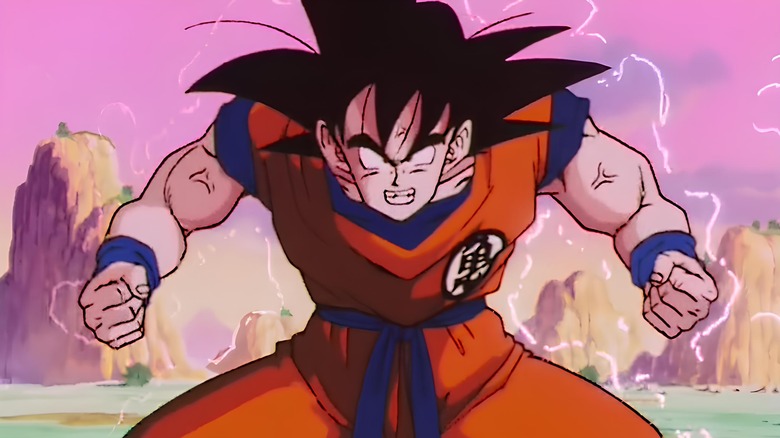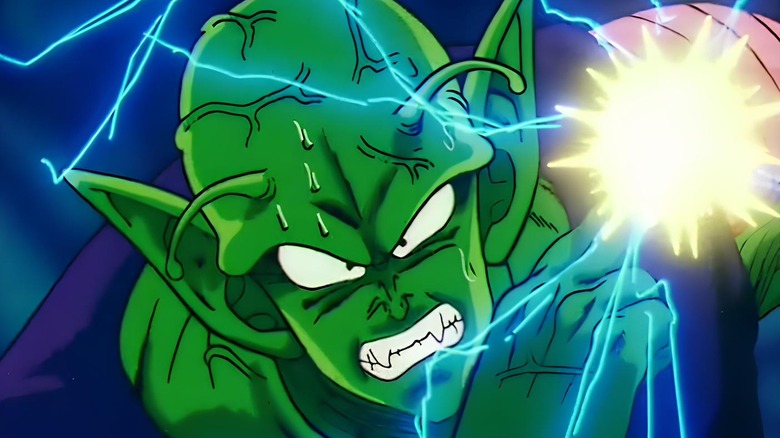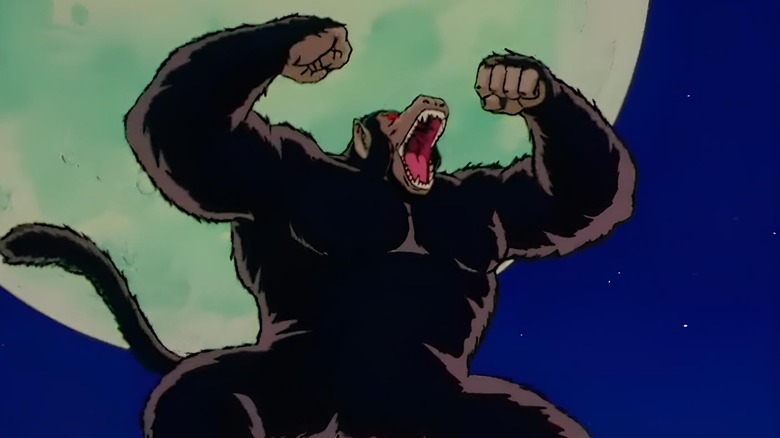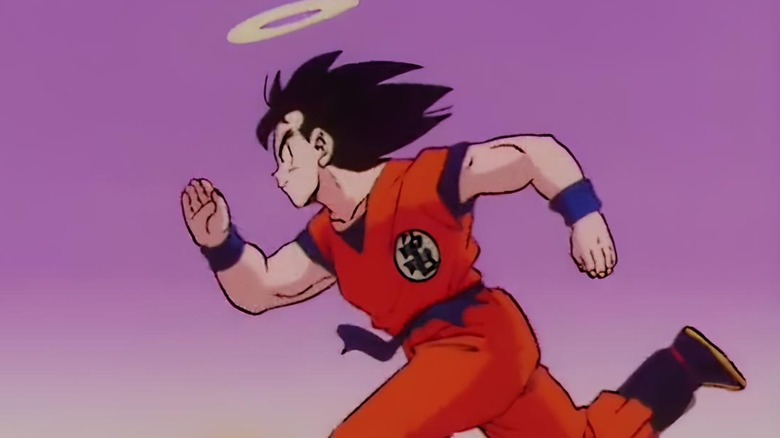Dragon Ball Z: What Parents Need To Know Before Letting Their Kids Watch
"Dragon Ball Z" is the second animated series in the ongoing "Dragon Ball" franchise. Where the first anime, "Dragon Ball," follows Goku and his friends in their younger years, the second installment sees them as full-grown adults. Due to its enormous popularity, there are several different cuts and dubs of "Z," with each intended for a slightly different age group. In the United States, the strictest age rating for "Z" is TV-14, which means that the series may not be suitable for children younger than 14. Conversely, the least strict age rating for "Z" is TV-F7-FV, which means that the series may not be suitable for children younger than seven years old, and that it also contains notably strong fantasy violence.
According to Common Sense Media, which bases its opinions on the TV-F7-FV edit — the version that played on Cartoon Network's after-school Toonami slot, most parents feel that "Z" may not be suitable for children younger than 10. "Consistent strong themes include good triumphing over evil, putting family first, and working as a team," states the site's breakdown of the series. "Still, there's no shortage of violent scenes; characters get hurt, unconventional weapons are used, and the dialogue includes language about killing, decimating, and destroying. While the show is massively appealing to anime fans, parents need to be aware that the strong violent visuals may frighten some kids."
Because of the different ratings, it's understandable that some parents might be unsure as to what their child should watch. Here's a deeper dive into what parents should know when deciding whether or not "Z" is suitable for their specific entertainment purposes.
Dragon Ball Z features prominent violent and intense battle sequences
"Dragon Ball Z" is an animated series that focuses on fictional, stylized combat, which means that it is an intentionally violent work of art. The core narrative flow literally slows down chronological time so that important fight sequences span multiple episodes. The primary battling system involves martial arts and laser projections, though some characters utilize sharp weaponry, too — Trunks, Vegeta's time-traveling son, wields a sword, for example. Regardless of the means, "Z" depicts graphic violence. The cast is often bruised or bloody, and even dismemberment is not infrequent. At one point, Frieza is slashed into so many ... segments ... that she seems to share "One Piece's" Buggy the Star Clown's Devil Fruit powers.
"Z" is often considered to be the most visually intense installment of the "Dragon Ball" franchise, although certain edits downplay its blood and gore. Common Sense Media ranks the series at a three out of five in terms of "Violence and Scariness." Less censored versions of the series would probably land at a four, possibly even a full five, out of five.
In "Z," battles that focus on the energy blasts are typically paired with bright, flashing lights. Viewers with epilepsy should approach the series with extreme caution.
Dragon Ball Z features brief nudity and some uncomfortable sexual humor
At its most uncensored, "Dragon Ball Z" features brief nudity, suggestive objectification, and consistent sexual humor. In terms of male nudity, Goku's exposed backside is shown once or twice for laughs, and both Goku and Gohan are shown fully nude — angled so as to hide their genitalia from view — when they revert to their human forms after transforming into their respective Great Ape Forms. Separately, male genitalia is fully and briefly exposed, although never for sexual purposes. There is female nudity, as well, although it is more infrequent and significantly more obscured. In one instance, Bulma is seen naked, partially hidden behind bath bubbles. In terms of objectification, this is more up to personal interpretation. Some of the women in "Z" wear what can be considered as revealing clothing, and the men are frequently shirtless.
Master Roshi (one of "Dragon Ball Z's strongest characters) is the primary source of sexual humor in "Z." He possesses a vast catalog of explicit magazines that are often seen lying around his home. He also takes every chance that he can to harass the women around him. Flirting, groping, he's comfortable with all of it.
Common Sense Media ranks the TV-Y7-FV version of "Z" at a two out of five in terms of "Sex, Romance, and Nudity." That said, the most liberal score the series could achieve would be a three. Even at its most flagrant, nudity and sexual content simply isn't at the core of the "Dragon Ball" franchise.
Dragon Ball Z features infrequent language, minimal substance use, and brief religious themes
Depending on the edit, "Dragon Ball Z" either uses very little mature language or none at all. At its most uncensored, the terms "bastard," "damn," and "jackass" are used with some frequency. Common Sense Media ranks the TV-Y7-FV version at a one out of five for "Language," noting that the series often leans on threatening dialogue to keep things darker. For example, CSM references the frequency with which characters predict the deaths of their opponents.
The same holds true for drug and alcohol use in "Z." In the TV-Y7-FV version, neither is present whatsoever. In less strict edits, however, their usage is minor. Bulma is seen drinking beer and several characters smoke cigarettes. The original manga was released during a time when smoking was still a visual shorthand for a person's perceived coolness.
"Z" is not a religious piece of media, but it does feature depictions of Heaven and Hell. In "Z," Heaven is referred to as Upper World and, in certain English dubs, Hell is referred to as HFIL — the Home For Infinite Losers. Regardless of their titles, Upper World is a spiritual plane of beautiful gardens and HFIL is a plane of demons, vampires, and other monsters ruled by King Yemma, an obvious stand-in for the Devil. For those who prefer their religious humor to be a bit sillier, however, there is also a pro-wrestler in the anime who goes by the name Mr. Satan.
"Z" is easily accessible, although certain edits, like the TV-PG cut, are more widely available. While not necessarily detrimental otherwise, discerning parents would be wise to know which edition they are permitting their children to view. Extra knowledge never hurts.



